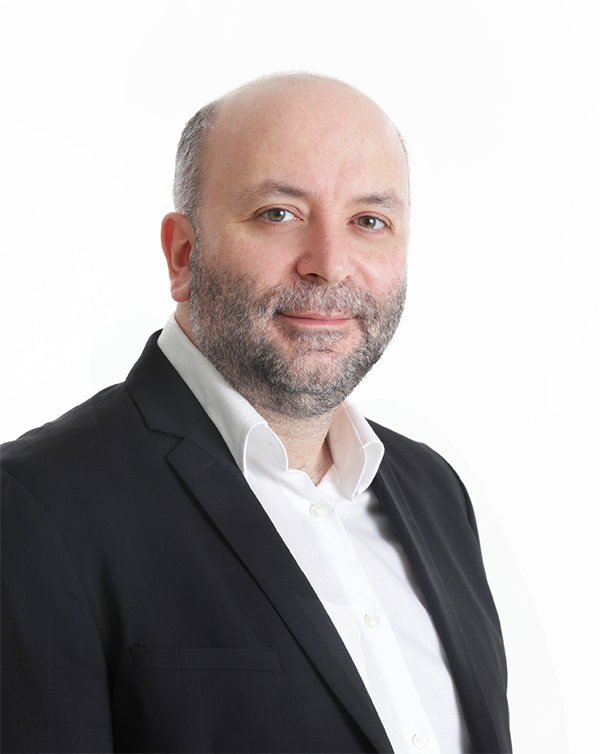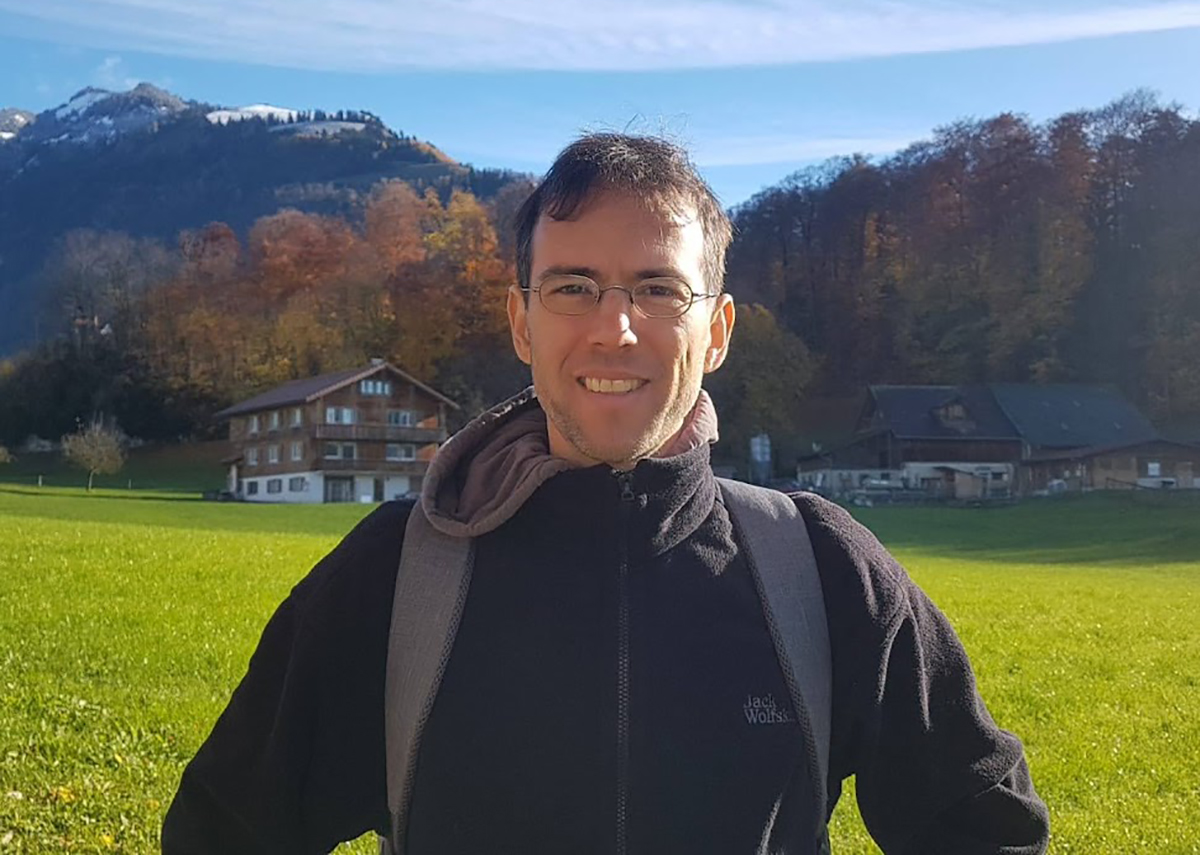Space
From vision to mission
The European Space Agency’s Juice space mission is scheduled to start its journey to Jupiter on April 13, 2023, where it will, among other things, search for traces of life on three of Jupiter’s icy moons. The University of Bern is strongly involved in this project. “uniaktuell” introduces some of the local researchers who are working hard on accomplishing the Juice mission.
The excitement is high: the Juice (JUpiter ICy moons Explorer) spacecraft is scheduled to begin its journey to Jupiter aboard an ARIANE 5 rocket from Europe’s Spaceport in Kourou, French Guiana on Thursday, April 13, 2023 at 2:15 p.m. After an almost eight-year journey, Juice will arrive at Jupiter to explore the largest planet in our solar system and three of its more than 80 moons. These are the icy dark worlds Ganymede, Callisto and Europa, ocean worlds where the average surface temperature is below minus 140 degrees Celsius. Ten instruments are on board Juice. The University of Bern is contributing the NIM mass spectrometer (which is part of the Particle Environment Package PEP) to the mission and is involved in two other instruments: the SWI Sub-millimeter Wave Instrument and the GALA Laser Altimeter.
Yann Alibert: early visionary

A lot of time usually passes between the idea for a space mission and its implementation. At the University of Bern, there are some people who have been involved with Juice from the very beginning. One of them is Yann Alibert, now co-director of the local Center for Space and Habitability. For him, the University of Bern’s prominent involvement in Juice is a logical consequence of its long tradition and proven expertise in space research: “The University of Bern was already involved in the first moon landing with the solar wind composition experiment. Since then, we have been regularly participating in space missions by the major space organizations, such as ESA, NASA and JAXA,” says Alibert.
The online magazine of the University of Bern

Subscribe to the uniAKTUELL newsletter
The University of Bern conducts cutting-edge research on topics that concern us as a society and shape our future. In uniAKTUELL we show selected examples and introduce you to the people behind them – gripping, multimedia and free of charge.
As a young postdoc, Alibert was involved in a proposal to ESA for a space mission to explore the Jupiter system. ESA had issued a call for mission proposals for its Cosmic Vision 2015-2025 space mission program in March 2007. At the time, Alibert was working on theoretical models of the formation of moons as well as Jupiter and Saturn. “Back then, we named our proposed mission after the French scientist Pierre-Simon Laplace. He was one of the first to suggest that planetary systems could form in a disk around the sun,” Alibert recounts. The LAPLACE proposal was selected by ESA and initially developed into the mission concept called EJSM (Europa-Jupiter System Mission) in collaboration with NASA. Building on this, the LAPLACE proposal was eventually refined by ESA into the Juice space mission. “So, in a way, Juice is the grandchild of LAPLACE,” Alibert explains, laughing. “The fact that our ‘idea’ is now flying to Jupiter makes me very proud, of course!”
Audrey Vorburger: astrophysicist on the rise

Audrey Vorburger is the deputy co-principal investigator of the Particle Environment Package (PEP) and the lead scientist for one of PEP’s six instruments, the NIM mass spectrometer. NIM will one day study the chemical and isotopic composition and distribution of particles in the atmospheres of Jupiter’s icy moons as well as the physical parameters of the moons’ atmospheres. “Back in December 2009, I attended the very first PEP meeting as a member of the PEP team. We were then delighted to see ESA announce in May 2012 that Juice had been selected for implementation, and in February 2013 that PEP had been selected for the journey to Jupiter,” says Vorburger.
At the time when the respective Juice instrument teams were able to designate science co-investigators, Vorburger was analyzing the newly acquired data from the energetic neutral particle instrument CENA on board Chandrayaan-1 (India’s first mission to the moon) and working extensively on planetary atmospheres. “Since this gave me the perfect qualifications, I was appointed as one of the two science co-investigators for the NIM mass spectrometer,” she recalls.
For Vorburger, Juice is a dream come true: “It is a unique feeling to know that the instrument you are holding in your hand will one day fly into space and provide us with new insights into our universe.” Asked about her personal highlights during the project, she replies: “They are still to come: I am of course looking forward to the imminent launch of JUICE and the moment when we know that Juice is now safely on its way to the Jupiter system; and then of course to the first scientific data that our instruments will provide us with.” With regard to space research at the University of Bern, Vorburger says, “Entire missions are created at the University of Bern, from the vision, conceptualization and construction, to data analysis. And science and technology always go hand in hand. Science is being lived here!”
André Galli: long-distance runner with good nerves

André Galli has been on the Juice team for a good ten years, pretty much since the moment ESA selected the Juice mission and confirmed that the University of Bern would be involved in the space mission to Jupiter. Galli is the project scientist for the NIM mass spectrometer. He explains, “I am involved in planning NIM’s measurements. I am conducting research in the lab and in theory for this so we have an idea of what to expect in terms of measurements in the future.”
When Galli joined the Juice team, he was a member of Professor Peter Wurz’s research team and had already been involved in space missions to Mars, Venus and in missions conducting solar wind research. For Galli, too, taking part in space missions was a long-held wish: “Ever since I was a teenager observing the planets and stars from a hill in the Emmental, I’ve been dying to be involved in a space mission.”
Because of the scale and complexity of space missions like Juice, international collaboration is essential: the budget required usually far exceeds what any single country (except perhaps the U.S.) can provide for such a complex mission, and the necessary expertise usually cannot be found in any single country either. Working in such large international teams over decades is exciting, but also demanding, as Galli explains: “It also requires frustration tolerance and perseverance from everyone involved. As a long-distance runner, I have just the right prerequisites for this.”
Andreas Riedo: catapulted to the front line
Someone who joined the Juice team later is the current NIM project manager Andreas Riedo. “I had just returned from my Einstein fellowship in Berlin in 2020. The project manager at the time, Davide Lasi, took a job in the U.S., and that’s when Professor Peter Wurz approached me and asked if I would be interested in joining Juice during this exciting phase.” Riedo had repeatedly been involved in space missions since his master’s degree: “But with the Juice job offer, I was immediately catapulted to the front line of space missions. Which was just perfect!”

He also talks about the highly complex international collaboration: “At the University of Bern, we were responsible for the integration and testing of three other Juice instruments, known as the PEP-Lo NU system, with contributions from Germany, Finland, Sweden, Hungary. All the work is thus extremely international, and all the cogs have to run in sync with each other for us to be able to deliver good work.” This is very complex, but makes the work exceptionally exciting.
“High-tech instruments for space research have been developed and built at the University of Bern for decades,” Riedo raves: “Which is why we built a unique technical environment to put such instruments through their paces.” For example, vibration tables to simulate rocket launches. Or large chambers that allow testing of how the developed systems work in space conditions.
The Juice mission aims to answer fundamental questions about the formation of planets and their moons – and it also involves the search for signs of life. Data from earlier space missions and model calculations suggest that there are subsurface oceans far below Ganymede’s and Europa’s external ice layers. Based on today’s knowledge, the oceans have all the properties that are needed for life to be created – and to exist in the long term. Riedo says: “The impact on humans and our way of thinking, if we find signs of life? Indescribable! For the first time ever, we could say that we are not alone.”
Series
The people behind Juice
This article is part of a series introducing the people at the University of Bern who are involved in the JUICE space mission. Read the second article introducing the people responsible for the design, construction, mechanics and electronics of the JUICE instruments on March 15.
THE UNIVERSITY OF BERN IS FLYING TO JUPITER
The Neutral and Ion Mass Spectrometer (NIM) has been developed and built at the Physics Institute of the University of Bern under the direction of Peter Wurz. NIM is part of the Particle Environment Package (PEP), which consists of six different spectrometers. The NIM mass spectrometer will study the chemical and isotopic composition and distribution of particles in the atmospheres of Jupiter’s icy moons, as well as the physical parameters of the moons’ atmospheres.
The Institute of Applied Physicsldeveloped the optics and calibration unit for the Sub-millimeter Wave Instrument (SWI) under the direction of Axel Murk. In the fall of 2020, the optics for the SWI were integrated and tested at the Max Planck Institute for Solar System Research. The SWI will measure Jupiter’s stratosphere and the atmospheres and surfaces of Jupiter’s icy moons. Instead of visible light, the instrument will measure thermal radiation from Jupiter’s stratosphere in sub-millimeter wavelengths to determine temperature distribution, composition and winds in the atmosphere. The atmospheres as well as the surface properties of the moons will also be studied.
Also on board Juice will be the GALA Laser Altimeter, for which the Range Finder Module was developed for at the Physics Institute under the direction of Nicolas Thomas. GALA will study the topography of Ganymede.
Support of the SERI / Swiss Space Office
The Swiss Confederation participates in the Juice Mission within the PRODEX programme (PROgramme de Développement d'EXpériences scientifiques) of the European Space Agency . Through this programme, national contributions for science missions can be developed and built by project teams from research and industry. This transfer of knowledge and technology between science and industry ultimately also gives Switzerland a structural competitive advantage as a business location – and enables technologies, processes and products to flow into other markets and thus generate added value for our economy.
Juice Launch Event
With live stream from Kourou and space talks
Thursday, April 13, 1:00 to 4:00 p.m.
University of Bern, “Exakte Wissenschaften” building, Sidlerstrasse 5, 3012 Bern, lecture hall 099
The event will be held in German and French.
BERN’S SPACE EXPLORATION: WITH THE WORLD’S ELITE SINCE THE FIRST MOON LANDING
When Buzz Aldrin, the second man to step out of the lunar module, did so on July 21, 1969, the first thing he did was to unfurl the Bernese solar wind sheet and plant it into the ground on the moon, even before the American flag. This Solar Wind Composition experiment (SWC), which was planned, built and analyzed by Prof. Dr. Johannes Geiss and his team from the Physics Institute of the University of Bern, was the first great highlight in the history of Bernese space exploration.
Bernese space research has been at the forefront of the world ever since: the University of Bern regularly participates in space missions led by major space organizations, such as ESA, NASA, and JAXA. With CHEOPS, the University of Bern shares responsibility with the ESA for an entire mission. Moreover, the Bernese researchers are among the world leaders when it comes to models and simulations on the formation and development of planets.
The successful work of the Space Research and Planetary Sciences division (WP) at the Physics Institute of the University of Bern has been strengthened by the foundation of a university center of excellence, the Center for Space and Habitability (CSH),. The Swiss National Science Foundation also awarded the University of Bern the National Centre of Competence in Research (NCCR) PlanetSwhich it leads jointly with the University of Geneva.